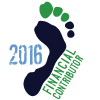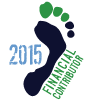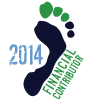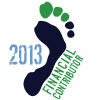I'm new to this, and have so much to learn, and so much to improve upon.
But one thing I noticed is that running on trails seems to have really accelerated the conditioning of the strength of my feet, (muscles and connective tissue), and less prone to injury.
Running on the constantly even and smooth surface of concrete, asphalt, and treadmill seems to really help identify form issues, but the downside is that the constant repetition of the same motion, with no variation, seems to make me more prone to repetitive use injury on novice feet.
The trail, conversely, with its uneven and constantly variable movement of the foot fall (the foot lands differently literally with every step on the uneven trail) seems to strengthen the novice foot faster, with less repetitive use soreness and injury....
As a newby, my feet can go at least 5 miles on the trails with no discomfort, but on even concrete 2-3 miles is my limit so far...plus, I think I can go a lot further than 5 miles on the trail barefooted...my overall strength and conditioning seem to be the weakest link on the uneven trail surface, whereas my feet are the weakest link on the even concrete surfaces.
Seems like the concrete is good for identifying form problems, but the uneven trail strengthens faster with less injury as long as you watch where you are stepping.
Do you more experienced barefooters have any thoughts on the subject, or better yet, some advice
But one thing I noticed is that running on trails seems to have really accelerated the conditioning of the strength of my feet, (muscles and connective tissue), and less prone to injury.
Running on the constantly even and smooth surface of concrete, asphalt, and treadmill seems to really help identify form issues, but the downside is that the constant repetition of the same motion, with no variation, seems to make me more prone to repetitive use injury on novice feet.
The trail, conversely, with its uneven and constantly variable movement of the foot fall (the foot lands differently literally with every step on the uneven trail) seems to strengthen the novice foot faster, with less repetitive use soreness and injury....
As a newby, my feet can go at least 5 miles on the trails with no discomfort, but on even concrete 2-3 miles is my limit so far...plus, I think I can go a lot further than 5 miles on the trail barefooted...my overall strength and conditioning seem to be the weakest link on the uneven trail surface, whereas my feet are the weakest link on the even concrete surfaces.
Seems like the concrete is good for identifying form problems, but the uneven trail strengthens faster with less injury as long as you watch where you are stepping.
Do you more experienced barefooters have any thoughts on the subject, or better yet, some advice



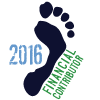

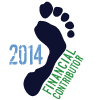





 Smooth surfaces were all I could handle. Usually the road in front of my house - but actually it was a bit rough for pavement so it was still harder on the soles than say smooth concrete (though not as stiff). When I went to the nearby rail trail, which was freshly paved and very smooth, I could run much further without my soles hurting. I could probably have done a nice grassy or dirt trail, but most trails that I tried were rocky or had gravel and I gave up on them. So honestly in my first year or two of barefoot, I really didn't do any trails/natural surfaces with the exception of a few times I did wearing VFFs.
Smooth surfaces were all I could handle. Usually the road in front of my house - but actually it was a bit rough for pavement so it was still harder on the soles than say smooth concrete (though not as stiff). When I went to the nearby rail trail, which was freshly paved and very smooth, I could run much further without my soles hurting. I could probably have done a nice grassy or dirt trail, but most trails that I tried were rocky or had gravel and I gave up on them. So honestly in my first year or two of barefoot, I really didn't do any trails/natural surfaces with the exception of a few times I did wearing VFFs.